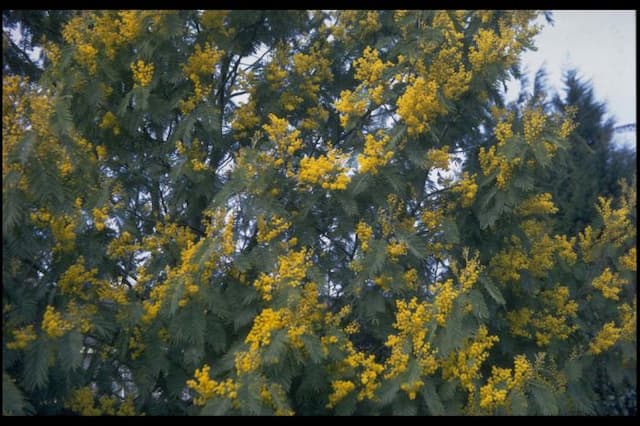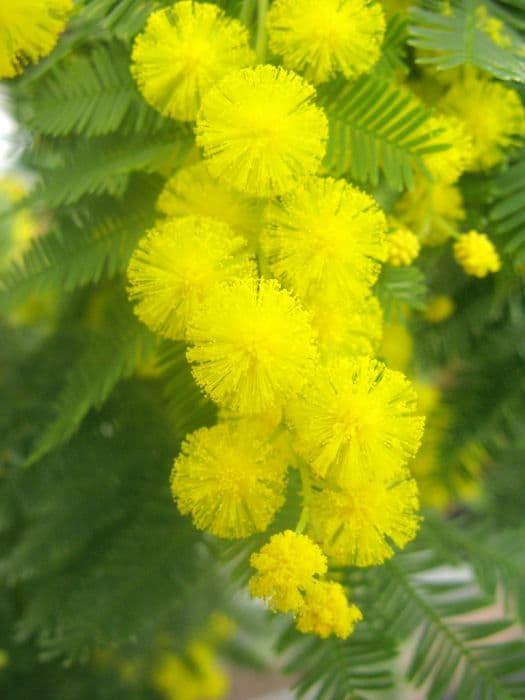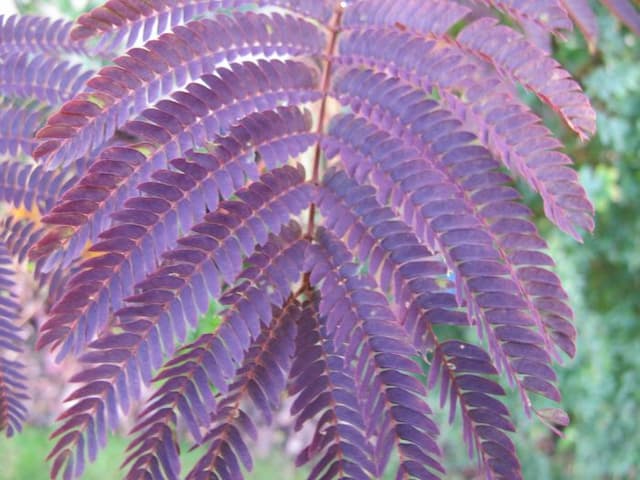Lupine Lupinus 'Polar Princess'

ABOUT
The Lupinus 'Polar Princess', commonly known as the lupine, is a captivating flowering plant recognized for its stunning beauty. The appearance of this lupine cultivar includes tall, vertical spikes adorned with dense clusters of pea-like flowers that create a striking visual display. The flowers themselves are delicately arranged around each spike and typically show off a soft, pastel color palette. The blooms can exhibit a creamy white hue or present gentle gradients of color that may shift towards pale pink or light blue, invoking a serene and frosted aesthetic. The foliage of the 'Polar Princess' lupine is equally attractive, with leaves that radiate outward in a palmate fashion, similar to the outspread fingers of a hand. Each leaf displays a gleaming green color and consists of several leaflets that are slender and slightly rounded, exuding an elegance that complements the flowers above. The texture of the leaves is somewhat attractive with a smooth finish that can catch the light, adding to the plant's overall lustre. Together, the floral spikes and lush foliage create a harmonious contrast, with the green of the leaves serving as the perfect backdrop to the luxurious floral display above. The entire plant exudes a sense of refined beauty and is commonly grown for its ornamental value in gardens where it attracts pollinators such as bees and butterflies. Overall, the 'Polar Princess' lupine is a plant of exquisite charm, renowned for its distinctive floral arrangements and its sublime addition to any plant collection or garden landscape.
About this plant
 Names
NamesFamily
Fabaceae
Synonyms
Polar Princess Lupine, Arctic Lupine
Common names
Lupinus 'Polar Princess'.
 Toxicity
ToxicityTo humans
Lupine, including the cultivar 'Polar Princess', contains toxic alkaloids that can be harmful if ingested. These alkaloids can cause various symptoms if a person consumes parts of the plant, especially the seeds. Symptoms of lupine poisoning may include nausea, vomiting, abdominal pain, diarrhea, dizziness, headache, and in severe cases, respiratory depression and cardiac arrhythmia. Ingesting large quantities can be particularly dangerous and may require medical attention.
To pets
Lupine, including the cultivar 'Polar Princess', is also toxic to pets such as dogs and cats. The alkaloids in lupine can lead to symptoms like loss of appetite, lethargy, weakness, confusion, tremors, and seizures if ingested. In severe cases, ingestion of lupine can result in liver damage and neurological disturbances. Immediate veterinary care is recommended if a pet is suspected to have eaten any part of a lupine plant.
 Characteristics
CharacteristicsLife cycle
Perennials
Foliage type
Deciduous
Color of leaves
Green
Flower color
White
Height
3 feet [0.91 meters]
Spread
2 feet [0.61 meters]
Plant type
Herb
Hardiness zones
4
Native area
North America
Benefits
 General Benefits
General Benefits- Attracts pollinators: Lupinus 'Polar Princess' is known to attract bees, butterflies, and other beneficial insects to the garden.
- Improves soil fertility: As a member of the legume family, this lupine can fix nitrogen in the soil, enriching it for other plants.
- Ornamental value: The striking white spikes of flowers provide aesthetic value to gardens and landscapes.
- Versatility in landscaping: It can be used in various types of gardens, including borders, wildflower meadows, and as specimen plants.
- Drought tolerance: Once established, it can withstand periods of low water availability, making it suitable for xeriscaping.
- Seasonal interest: It has a long blooming period, often from late spring to early summer, which adds color to gardens for an extended time.
- Cold hardiness: This variety can endure and thrive in cooler temperatures, making it ideal for gardeners in colder climates.
- Erosion control: Its root system helps stabilize soil and prevent erosion on slopes and banks.
- Wildlife habitat: Provides cover and potential food sources for wildlife, especially with its seed pods for birds.
 Medical Properties
Medical PropertiesThis plant is not used for medical purposes.
 Air-purifying Qualities
Air-purifying QualitiesThis plant is not specifically known for air purifying qualities.
 Other Uses
Other Uses- Lupine seeds, such as those from 'Polar Princess', can be used as a high-protein addition to animal feed, although care must be taken to ensure they are properly processed to remove alkaloids.
- The 'Polar Princess' lupine can be used as a natural dye source, providing colors ranging from yellow to blue depending on the part of the plant used and the mordant applied.
- Lupine roots are capable of nitrogen fixation, making them beneficial for improving soil quality and fertility in agriculture and gardening.
- As a cover crop, 'Polar Princess' can be planted to control soil erosion, maintain soil structure, and suppress weeds.
- Fibers from lupine stems have been traditionally used for making textiles in some cultures.
- The lupine plant can be part of companion planting schemes, potentially deterring certain pests or attracting beneficial insects.
- Used in flower arranging, the spikes of the 'Polar Princess' can provide vertical interest and a touch of elegance to bouquets and floral displays.
- Some artists and crafters use the colorful blossoms of lupines like 'Polar Princess' as a natural source of pigments for painting or fabric art.
- The dense growth habit of lupines can provide habitat and shelter for small wildlife and beneficial insects within a garden ecosystem.
- Lupine plants, including 'Polar Princess', can be incorporated into educational programs about botany, ecology, and horticulture to demonstrate plant growth and the nitrogen cycle.
Interesting Facts
 Feng Shui
Feng ShuiThe Lupine is not used in Feng Shui practice.
 Zodiac Sign Compitability
Zodiac Sign CompitabilityThe Lupine is not used in astrology practice.
 Plant Symbolism
Plant Symbolism- Imagination: The Lupinus 'Polar Princess', commonly known as Lupine, often symbolizes imagination due to its richly colored and imaginative spikes of flowers.
- Innovation: Lupines are associated with innovation because of their variety and ability to flourish in rugged conditions, embodying the ability to adapt and create new opportunities.
- Transformation: This plant is a symbol of transformation, reflecting the metamorphosis from simple seeds to tall, striking floral spikes.
- Endurance: Lupines represent endurance as they are hardy plants that can survive and thrive in poor soil conditions, indicating an ability to withstand adversity.
- Devotion: The Lupine expresses devotion, with its tall, stately flowers standing as a testament to steadfastness in relationships and loyalty.
 Water
WaterLupine 'Polar Princess' requires consistent moisture, especially during the growing season. Water the plant thoroughly once a week, providing about 1-2 gallons per watering, ensuring the soil is moist but not waterlogged. During hot and dry spells, increase watering frequency to maintain moisture levels. In cooler and wetter periods, reduce watering to prevent root rot. It's important not to let the soil dry out completely between waterings.
 Light
LightThe lupine 'Polar Princess' thrives best in full sunlight. They need at least 6 hours of direct sunlight daily to ensure vigorous growth and abundant flowering. The ideal spot for planting would be in an area that receives unobstructed sunlight for most of the day.
 Temperature
TemperatureLupine 'Polar Princess' prefers temperate climatic conditions and does well in temperatures ranging from 60 to 70 degrees Fahrenheit. The plant can survive minimum temperatures down to 20 degrees Fahrenheit but will not tolerate prolonged periods of extreme cold or heat. The ideal temperature range promotes healthy foliage and flowering.
 Pruning
PruningPrune the lupine 'Polar Princess' to encourage bushier growth and to remove spent flower spikes, which promotes further blooming. Pruning should be done immediately after the initial flowering finishes, typically in mid to late summer. Removing faded flowers before they set seed also prevents unwanted self-seeding.
 Cleaning
CleaningAs needed
 Soil
SoilFor 'Polar Princess' lupine, the best soil mix is well-draining and slightly acidic to neutral, with a pH of 6.0 to 7.0. A blend of garden soil, peat moss, and sand or perlite can provide the appropriate structure. Fertilize moderately as lupines fix their own nitrogen.
 Repotting
Repotting'Polar Princess' lupine does not typically require frequent repotting. Repot every 2-3 years or when it appears root-bound. It's best to repot in the spring before the growing season begins.
 Humidity & Misting
Humidity & Misting'Polar Princess' lupine prefers moderate humidity levels. Avoiding excessively dry conditions is important, though it does not require the high humidity that tropical plants might.
 Suitable locations
Suitable locationsIndoor
Ensure sufficient light and cool conditions for indoor 'Polar Princess' lupine.
Outdoor
Plant in full sun to partial shade with well-drained soil for outdoor lupine.
Hardiness zone
4-8 USDA
 Life cycle
Life cycleThe Lupinus 'Polar Princess', commonly known as Polar Princess Lupine, begins its life cycle as a seed, which upon germination in the spring, roots in the soil and sprouts a small rosette of leaves. The plant rapidly enters a vegetative stage where it develops a strong stem and a larger rosette of distinct palmate leaves. Following the vegetative growth, the Polar Princess Lupine enters the flowering stage usually in late spring to early summer, producing tall, erect spikes adorned with white flowers that are attractive to bees and butterflies. After pollination, these flowers turn into seed pods that ripen, dry, and eventually split open to release seeds for dispersal. The plant can then go into a period of dormancy, especially in colder regions, where it may die back to the ground and conserve energy in the roots until the following spring. The life cycle is completed when new growth emerges from the perennial rootstock, repeating the cycle.
 Propogation
PropogationPropogation time
Spring-Early Summer
The Lupinus 'Polar Princess', commonly known as Lupine, can be propagated by seed. The most popular method is to sow the seeds directly into the ground or into pots. For best results, seeds should be sown in the spring or autumn. To propagate Lupine by seed, one should first scarify the seeds by gently rubbing them with sandpaper to break the seed coat, which enhances water absorption and germination. After scarification, the seeds should be soaked in water for a period of 24 hours to further assist in softening the seed coat. Once prepared, the seeds can be planted about 1/8 inch (approximately 3 mm) deep in well-drained soil and kept moist until germination, which typically occurs within two to four weeks. Once seedlings appear, they should be thinned out or transplanted to allow ample room for growth.









